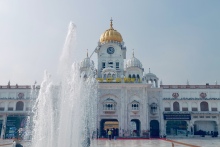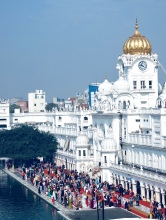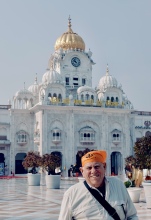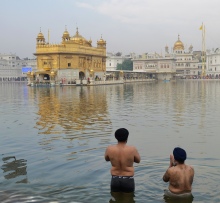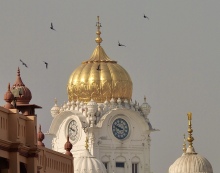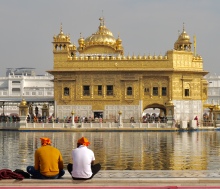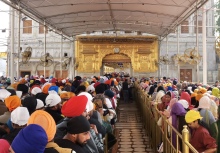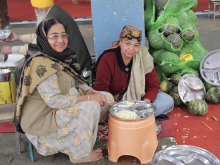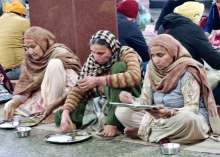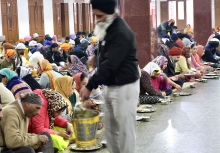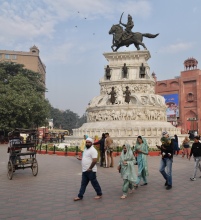Nestled in the city of Amritsar in Northwestern India is the Golden Temple, a site of immense beauty, peace, and devotion. This sublime masterpiece of worship is undoubtedly the most recognizable Sikh temple in the world.
Sikhism, originated in the late 15th century, and carries a distinctive spiritual path emphasizing the values of devotion, humility, and service to humanity. The Golden Temple embodies the principles of inclusivity and sanctuary, welcoming both visitors and pilgrims irrespective of their background or belief.
The most captivating and immediately apparent feature of the Golden Temple is the resplendent gold façade. This golden façade creates a mesmerizing effect in the daytime that transforms into a warm and ethereal glow as the sun sets. This captivating spectacle draws at least 100,000 pilgrims and visitors every day, contributing to the awe-inspiring aura of the sacred site.
The Amrit Sarovar, or “Pool of Nectar,” encircles the Golden Temple, offering devotees a place to cleanse themselves before prayer. A dip in this pool is believed to bring spiritual cleansing and healing.
The Sikh tradition of langar, (free meals) established in 1481, is a cherished practice maintained at the Golden Temple. Donations entirely fund this communal kitchen and it is run by dedicated volunteers who undertake tasks like cooking, cleaning, and serving langar. Approximately fifty thousand meals are served to visitors each day at the Golden Temple, and this number doubles during religious events.


